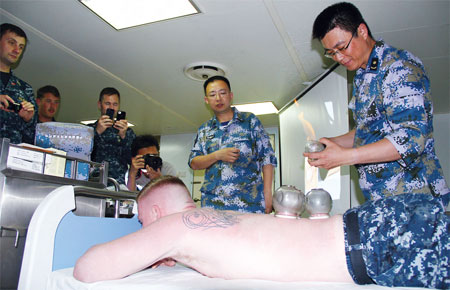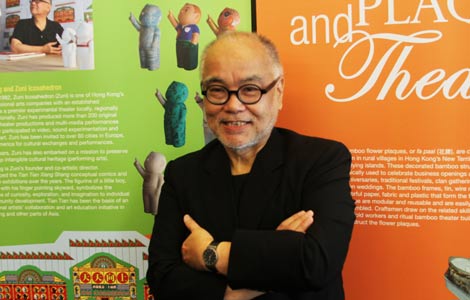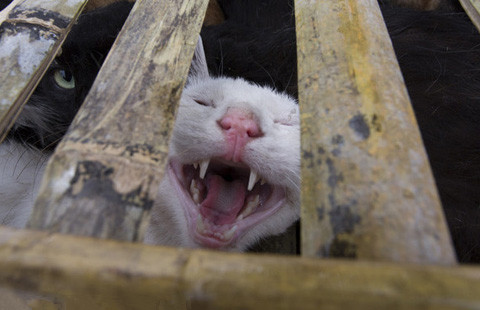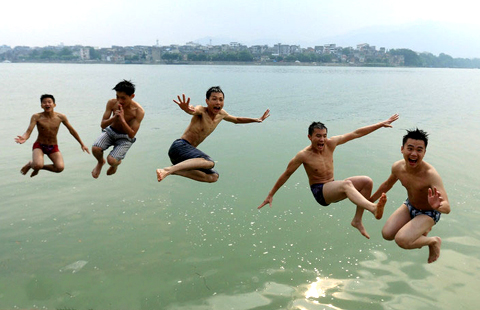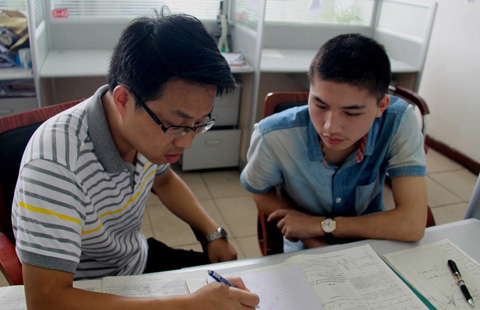Chinese medicine enlivens RIMPAC
Updated: 2014-07-10 11:00
By Zhang Shaohu in Pearl Harbor, HI and Chen Weihua in Washington (China Daily USA)
|
||||||||
After a medical exchange conference on the Chinese People's Liberation Army Navy hospital ship Peace Ark on July 3 as part of the 2014 Rim of the Pacific (RIMPAC) exercise, the Chinese vessel greeted military medical officials from various participating nations on Tuesday in a presentation on traditional Chinese medicine (TCM).
|
Fu Bensheng (right), a Traditional Chinese Medicine doctor on the PLA Navy hospital ship Peace Ark, applies the cupping therapy on a visiting military medical official during a TCM demonstration and exchange conducted on the ship on Tuesday as part of the 2014 Rim of the Pacific (RIMPAC) exercise. Zhang Shaohu / China Daily |
Zhai Xiaofeng, the TCM clinic doctor of the Peace Ark hospital, explained the basics of TCM to 18 visitors.
TCM focuses on the human body as a whole system, while Western medicine focuses more on each specific part of the human body, Zhai said, triggering questions from curious visitors.
Zhai explained the cause of bloodshot eyes using the TCM theory when Lorry Riebel, from the US Navy hospital ship Mercy, tried to understand which of the five elements in TCM theory - metal, wood, water, fire and earth - eyes belong.
The exchange reached its climax when Fu Bensheng, a TCM doctor on Peace Ark, displayed the Chinese massage and cupping therapies.
"I just experienced the cupping therapy. My back feels warm and I feel relaxed just like after a massage," said Nickolas Ross, a US military medical official.
S. Mandnar, a doctor from the Singaporean navy, said he found the cupping therapy very interesting. Mandnar has experienced TCM in Singapore where it is popular. "I think TCM is a very good way of providing treatment," he said.
Peace Ark and Mercy are the only two hospital ships participating in 2014 RIMPAC. It's also the first time for any hospital ship to participate in RIMPAC since the world's largest naval exercise was launched in 1971.
The medical conference aboard Peace Ark on July 3 was attended by military medical personnel from the US, Canada, Indonesia, New Zealand, Norway and South Korea.
"We wanted the attendees to learn about our experiences on humanitarian assistance relief missions," said Lieutenant Commander Xin Du, a PLA Navy medical officer.
"But more importantly, I wanted to learn from others' experience helping out on humanitarian relief efforts. I like the idea of exchanging ideas with other countries, it promotes friendship and subsequent joint missions," Du was quoted as saying by the US Navy website.
Just as military medical exchanges were conducted on both the Peace Ark and Mercy, the US Third Fleet conducted a two-day scene setter in Pearl Harbor for the multinational and interagency participants of the humanitarian assistance and disaster relief scenario of RIMPAC on July 5-6.
A total of four PLA Navy ships are attending the RIMPAC for the first time this year. They are the missile destroyer Haikou, missile frigate Yueyang, supply ship Qiandaohu and hospital ship Peace Ark, with a total of 1,100 personnel, making it the second largest representation after only the host US.
Twenty-two nations, more than 40 ships and submarines, more than 200 aircraft and 25,000 personnel are participating in RIMPAC from June 26 to Aug 1 in and around the Hawaiian Islands and Southern California.
Military exchanges have been on the rise between China and the US in the past two years despite tensions in the South China Sea and East China Sea, where China and two US allies, Japan and the Philippines, have maritime territorial disputes.
In Beijing on Tuesday, PLA Chief of General Staff Fang Fenghui, who visited the US in May, met with Samuel Locklear, visiting commander of US Pacific Command on Tuesday.
They pledged to control disputes and push ahead with relations between the two militaries, according to a Xinhua News Agency report.
Fang said the two sides should cherish bilateral relations and appropriately handle their disputes while seeking more common ground.
Locklear said that the two sides should take a long-term perspective, handle disputes and advance military ties under the requirements of the leaders of the two countries.
Contact the writers atzhangshaohu@chinadaily.com.cnzhangshaohu@chinadaily.com.cnandchenweihua@chinadailyusa.com
(China Daily USA 07/10/2014 page2)
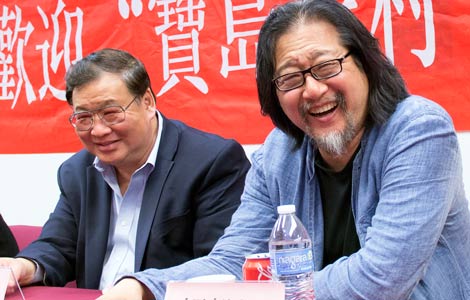
 The Village by Stan Lai comes to stages in the US
The Village by Stan Lai comes to stages in the US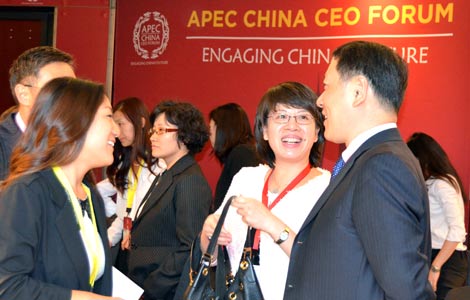
 APEC China CEO Forum opens in Seattle
APEC China CEO Forum opens in Seattle
 Chinese Navy leave Pearl Harbor to join RIMPAC drill
Chinese Navy leave Pearl Harbor to join RIMPAC drill
 'Cracking Tech Fortune Cookies'
'Cracking Tech Fortune Cookies'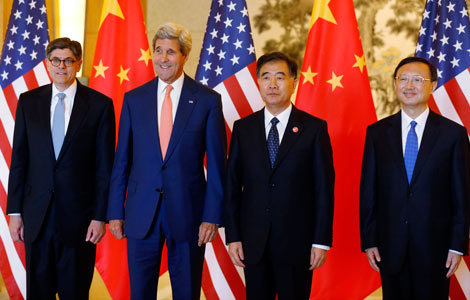
 US, China keen on fixing ties
US, China keen on fixing ties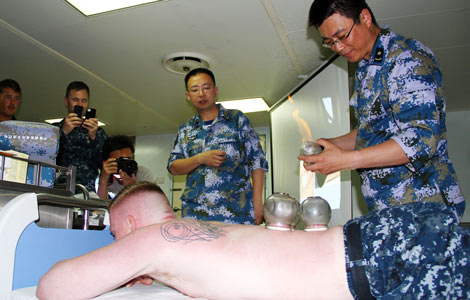
 Traditional Chinese medicine enlivens RIMPAC crowd
Traditional Chinese medicine enlivens RIMPAC crowd
 Hainan provides limo service in Seattle
Hainan provides limo service in Seattle
 Wanda's Chicago deal is first in US realty
Wanda's Chicago deal is first in US realty
Most Viewed
Editor's Picks
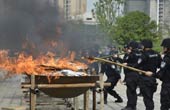
|

|

|

|

|

|
Today's Top News
China-US investment treaty on fast track
Horses and dragons kick off art show
Chinese are No 1 buyers of US residential property
College addresses need for experts in anti-terrorism
Minister: US 'key' to global recovery
Snowden applies for asylum extension in Russia
5 killed in Houston shooting, standoff underway
Xi: World big enough for two great nations
US Weekly

|

|
